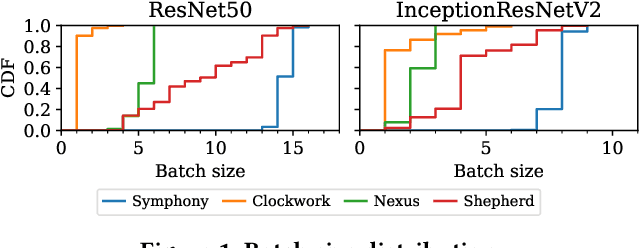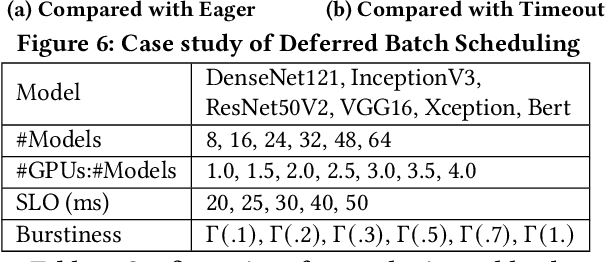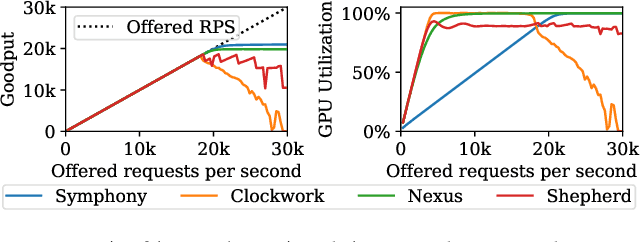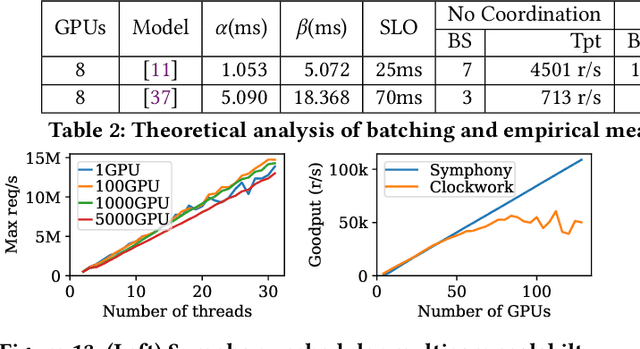Yu Xin
Med3DVLM: An Efficient Vision-Language Model for 3D Medical Image Analysis
Mar 25, 2025Abstract:Vision-language models (VLMs) have shown promise in 2D medical image analysis, but extending them to 3D remains challenging due to the high computational demands of volumetric data and the difficulty of aligning 3D spatial features with clinical text. We present Med3DVLM, a 3D VLM designed to address these challenges through three key innovations: (1) DCFormer, an efficient encoder that uses decomposed 3D convolutions to capture fine-grained spatial features at scale; (2) SigLIP, a contrastive learning strategy with pairwise sigmoid loss that improves image-text alignment without relying on large negative batches; and (3) a dual-stream MLP-Mixer projector that fuses low- and high-level image features with text embeddings for richer multi-modal representations. We evaluate our model on the M3D dataset, which includes radiology reports and VQA data for 120,084 3D medical images. Results show that Med3DVLM achieves superior performance across multiple benchmarks. For image-text retrieval, it reaches 61.00% R@1 on 2,000 samples, significantly outperforming the current state-of-the-art M3D model (19.10%). For report generation, it achieves a METEOR score of 36.42% (vs. 14.38%). In open-ended visual question answering (VQA), it scores 36.76% METEOR (vs. 33.58%), and in closed-ended VQA, it achieves 79.95% accuracy (vs. 75.78%). These results highlight Med3DVLM's ability to bridge the gap between 3D imaging and language, enabling scalable, multi-task reasoning across clinical applications. Our code is publicly available at https://github.com/mirthAI/Med3DVLM.
ArticulatedGS: Self-supervised Digital Twin Modeling of Articulated Objects using 3D Gaussian Splatting
Mar 11, 2025Abstract:We tackle the challenge of concurrent reconstruction at the part level with the RGB appearance and estimation of motion parameters for building digital twins of articulated objects using the 3D Gaussian Splatting (3D-GS) method. With two distinct sets of multi-view imagery, each depicting an object in separate static articulation configurations, we reconstruct the articulated object in 3D Gaussian representations with both appearance and geometry information at the same time. Our approach decoupled multiple highly interdependent parameters through a multi-step optimization process, thereby achieving a stable optimization procedure and high-quality outcomes. We introduce ArticulatedGS, a self-supervised, comprehensive framework that autonomously learns to model shapes and appearances at the part level and synchronizes the optimization of motion parameters, all without reliance on 3D supervision, motion cues, or semantic labels. Our experimental results demonstrate that, among comparable methodologies, our approach has achieved optimal outcomes in terms of part segmentation accuracy, motion estimation accuracy, and visual quality.
Zero-Shot Hashing Based on Reconstruction With Part Alignment
Mar 10, 2025Abstract:Hashing algorithms have been widely used in large-scale image retrieval tasks, especially for seen class data. Zero-shot hashing algorithms have been proposed to handle unseen class data. The key technique in these algorithms involves learning features from seen classes and transferring them to unseen classes, that is, aligning the feature embeddings between the seen and unseen classes. Most existing zero-shot hashing algorithms use the shared attributes between the two classes of interest to complete alignment tasks. However, the attributes are always described for a whole image, even though they represent specific parts of the image. Hence, these methods ignore the importance of aligning attributes with the corresponding image parts, which explicitly introduces noise and reduces the accuracy achieved when aligning the features of seen and unseen classes. To address this problem, we propose a new zero-shot hashing method called RAZH. We first use a clustering algorithm to group similar patches to image parts for attribute matching and then replace the image parts with the corresponding attribute vectors, gradually aligning each part with its nearest attribute. Extensive evaluation results demonstrate the superiority of the RAZH method over several state-of-the-art methods.
BATseg: Boundary-aware Multiclass Spinal Cord Tumor Segmentation on 3D MRI Scans
Dec 09, 2024Abstract:Spinal cord tumors significantly contribute to neurological morbidity and mortality. Precise morphometric quantification, encompassing the size, location, and type of such tumors, holds promise for optimizing treatment planning strategies. Although recent methods have demonstrated excellent performance in medical image segmentation, they primarily focus on discerning shapes with relatively large morphology such as brain tumors, ignoring the challenging problem of identifying spinal cord tumors which tend to have tiny sizes, diverse locations, and shapes. To tackle this hard problem of multiclass spinal cord tumor segmentation, we propose a new method, called BATseg, to learn a tumor surface distance field by applying our new multiclass boundary-aware loss function. To verify the effectiveness of our approach, we also introduce the first and large-scale spinal cord tumor dataset. It comprises gadolinium-enhanced T1-weighted 3D MRI scans from 653 patients and contains the four most common spinal cord tumor types: astrocytomas, ependymomas, hemangioblastomas, and spinal meningiomas. Extensive experiments on our dataset and another public kidney tumor segmentation dataset show that our proposed method achieves superior performance for multiclass tumor segmentation.
Symphony: Optimized Model Serving using Centralized Orchestration
Aug 14, 2023



Abstract:The orchestration of deep neural network (DNN) model inference on GPU clusters presents two significant challenges: achieving high accelerator efficiency given the batching properties of model inference while meeting latency service level objectives (SLOs), and adapting to workload changes both in terms of short-term fluctuations and long-term resource allocation. To address these challenges, we propose Symphony, a centralized scheduling system that can scale to millions of requests per second and coordinate tens of thousands of GPUs. Our system utilizes a non-work-conserving scheduling algorithm capable of achieving high batch efficiency while also enabling robust autoscaling. Additionally, we developed an epoch-scale algorithm that allocates models to sub-clusters based on the compute and memory needs of the models. Through extensive experiments, we demonstrate that Symphony outperforms prior systems by up to 4.7x higher goodput.
NeRF synthesis with shading guidance
Jun 20, 2023Abstract:The emerging Neural Radiance Field (NeRF) shows great potential in representing 3D scenes, which can render photo-realistic images from novel view with only sparse views given. However, utilizing NeRF to reconstruct real-world scenes requires images from different viewpoints, which limits its practical application. This problem can be even more pronounced for large scenes. In this paper, we introduce a new task called NeRF synthesis that utilizes the structural content of a NeRF patch exemplar to construct a new radiance field of large size. We propose a two-phase method for synthesizing new scenes that are continuous in geometry and appearance. We also propose a boundary constraint method to synthesize scenes of arbitrary size without artifacts. Specifically, we control the lighting effects of synthesized scenes using shading guidance instead of decoupling the scene. We have demonstrated that our method can generate high-quality results with consistent geometry and appearance, even for scenes with complex lighting. We can also synthesize new scenes on curved surface with arbitrary lighting effects, which enhances the practicality of our proposed NeRF synthesis approach.
Low Complexity Detection of Spatial Modulation Aided OTFS in Doubly-Selective Channels
May 17, 2023Abstract:A spatial modulation-aided orthogonal time frequency space (SM-OTFS) scheme is proposed for high-Doppler scenarios, which relies on a low-complexity distance-based detection algorithm. We first derive the delay-Doppler (DD) domain input-output relationship of our SM-OTFS system by exploiting an SM mapper, followed by characterizing the doubly-selective channels considered. Then we propose a distance-based ordering subspace check detector (DOSCD) exploiting the \emph{a priori} information of the transmit symbol vector. Moreover, we derive the discrete-input continuous-output memoryless channel (DCMC) capacity of the system. Finally, our simulation results demonstrate that the proposed SM-OTFS system outperforms the conventional single-input-multiple-output (SIMO)-OTFS system, and that the DOSCD conceived is capable of striking an attractive bit error ratio (BER) vs. complexity trade-off.
OTFDM: A Novel 2D Modulation Waveform Modeling Dot-product Doubly-selective Channel
Apr 04, 2023Abstract:Recently, a two-dimension (2D) modulation waveform of orthogonal time-frequency-space (OTFS) has been a popular 6G candidate to replace existing orthogonal frequency division multiplexing (OFDM). The extensive OTFS researches help to make both the advantages and limitations of OTFS more and more clear. The limitations are not easy to overcome as they come from OTFS on-grid 2D convolution channel model. Instead of solving OTFS inborn challenges, this paper proposes a novel 2D modulation waveform named orthogonal time-frequency division multiplexing (OTFDM). OTFDM uses a 2D dot-product channel model to cope with doubly-selectivity. Compared with OTFS, OTFDM supports grid-free channel delay and Doppler and gains a simple and efficient 2D equalization. The concise dot-division equalization can be easily combined with MIMO. The simulation result shows that OTFDM is able to bear high mobility and greatly outperforms OFDM in doubly-selective channel.
 Add to Chrome
Add to Chrome Add to Firefox
Add to Firefox Add to Edge
Add to Edge